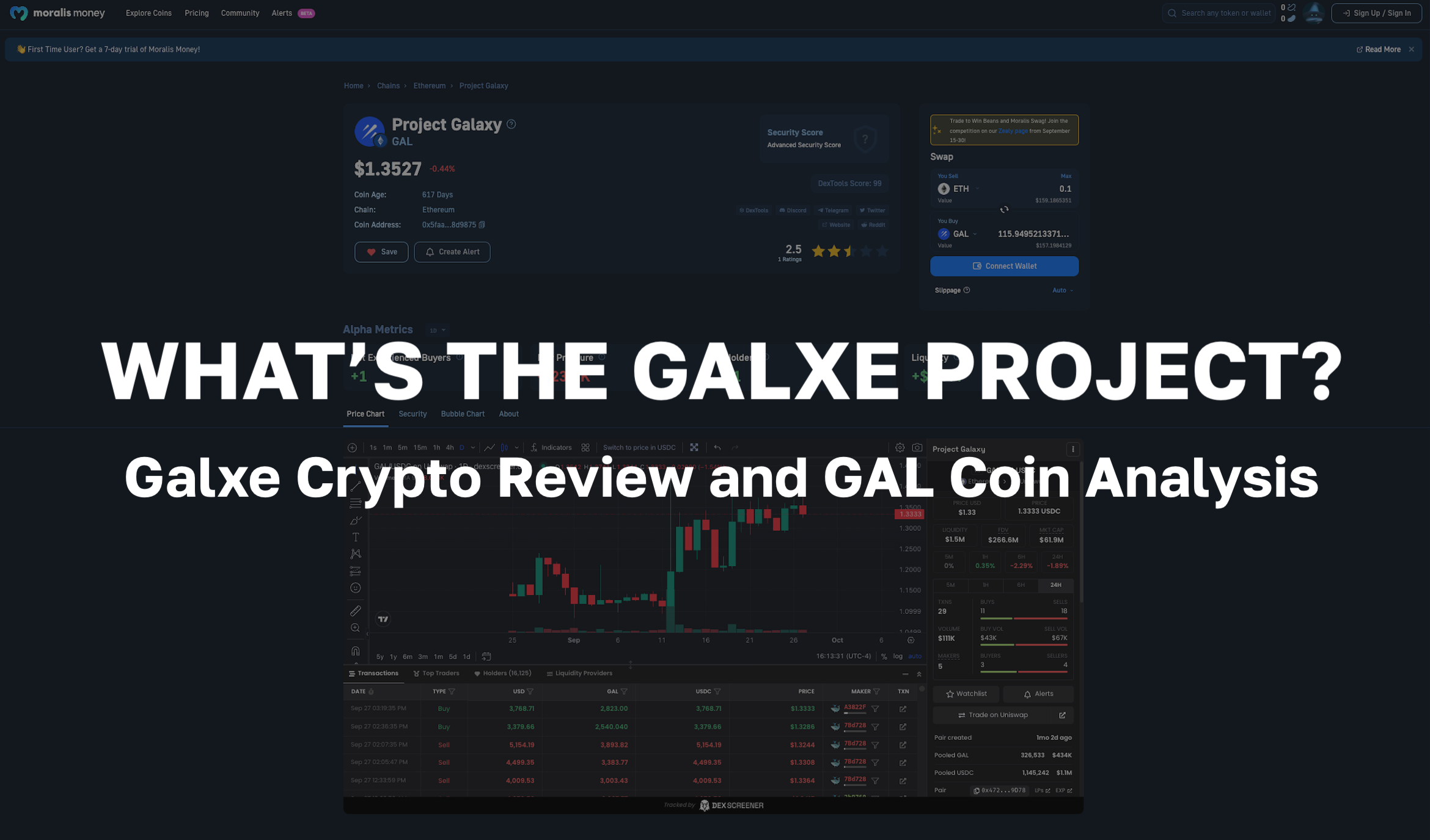Investing in crypto and seeing the price go up is always a good feeling. However, if investors don’t learn how and when to sell crypto, it may hinder their potential gains. This is because many newcomers to the industry can get swept away by the bullish volatility and miss out on gains due to not taking profits. “Unrealised profit” is when an investor buys crypto and the value increases, but the investor just sits and watches, hoping the price will continue to go up forever. Then, an overnight market trend and a 90% dump can wipe out all profits the investor had. Therefore, it is vital to learn how and when to sell crypto at profitable times.
In this article, we are going to dive deep into crypto market trends and economic cycles. We’ll briefly cover how the cryptocurrency markets work and the definition of free-market capitalism. Then, we’ll discuss a range of ways that may help plan an investment strategy for selling crypto assets at a profit. Finally, we’ll explore a few other options for investors unsure about whether or not to sell their assets.
This article assumes readers are already familiar with cryptocurrencies and some trading terminology. Thus, for readers who would like a quick primer on crypto basics, be sure to read our “What is Crypto?” and “What is Bitcoin?” articles. Also, our “How to Invest in Crypto” article is an excellent guide if you have yet to purchase your first crypto. Plus, our Blockchain & Bitcoin Fundamentals course at Moralis Academy is the best place to learn about the foundation of this cutting-edge technology. Begin your crypto journey with the number one Web3 education suite, Moralis Academy!
Understanding the Cryptocurrency Markets
The first cryptocurrency to launch was Bitcoin. Further, it was launched in 2009 as a decentralized peer-to-peer payments network by the pseudonymous developer(s) Satoshi Nakamoto. Introducing the innovative blockchain technology, Bitcoin offered a solution to the double-spending problem. The result is a distributed network of computers collaboratively working to validate and verify truthful peer-to-peer transactions. As such, this removes the need for expensive third-party intermediaries between users. For an overview of how the underlying technology works, save our “Blockchain Explained” article for later!
Since then, thousands of different cryptocurrency projects have been launched. Creating a token is easy. What brings value to a token is its utility to the project, scarcity, and any benefits to its holders.
Free Market Capitalism
The basic premise of capitalism is a “free market” of supply and demand. In principle, capitalism works well for facilitating competition, creativity, and innovation. Furthermore, in a truly free market, businesses and assets deemed worthless would go to zero, become insolvent, and redistribute any assets into innovative up-and-coming in-demand companies. However, free-market capitalism within the traditional financial industry is more often than not manipulated. This is because local governments, corporate behemoths, and central banks can collaboratively influence the traditional markets. Moreover, the continuous greed from the top 1% of company directors disproportionately sharing profits has led to the worst global inequality in centuries.
On the other hand, blockchain technology brings the revolutionary opportunity to change this. With cryptocurrencies, all transactions are publicly and securely transparent on a block explorer. Furthermore, with decentralized foundations, the tokenomic design of cryptocurrencies cannot change or be manipulated. The only exception to this rule is if a project’s community made a majority vote to do so. Therefore, neither governmental nor central bank interventions can affect the intricate dance of cryptography, mathematics, and computer science in a crypto project. Tokenomic designs are immutable unless otherwise voted for by a project’s community. This in itself is a revolutionary opportunity for a capitalist free market to exist without crony imposition.
Understanding the basics of how the traditional economy works will give you an edge on knowing when to sell crypto investments. For an overview of how decentralized finance (DeFi) works, see our “DeFi Explained” article next!
How to Know When to Sell Crypto Assets
Learning when to sell crypto assets is a skill often refined over time with experience. It is incredibly common for first-time crypto investors to sell their assets at a loss. This is simply due to the lack of education and falling victim to trends in market psychology. For example, as the price increases, more people are likely to invest, thinking it’ll continue going up. As the price decreases, most people sell due to fear of the price continually falling. However, the good news is that only education and awareness are key to knowing when to sell crypto. Below, we'll explore a few fundamental tips on learning how to time the markets and when to sell crypto.
Technical Analysis
Technical analysis (TA) is applicable across all forms of investments, including crypto, stocks, gold, and other commodities. TA refers to the patterns of market behavior correlating to patterns on a trading chart. As such, if investors can understand how to read a trading chart and grasp the overall market trend and the timing of microtrends on a smaller timescale, it is easier to make probabilistic calculations and risk-assessed investments.
Also, knowledge of technical analysis (TA) is crucial to investors who want to learn when to buy and sell crypto. A general theory of economics is that market patterns are "cyclical". Also, TA presents a set of trading principles that trends tend to follow most of the time. Therefore, being able to identify a significant trend change is a good investment tactic that helps holders know when to sell crypto.
Fundamental Analysis
Another form of market analysis - more present in crypto markets than traditional markets - is fundamental analysis (FA). Instead of monitoring price movements on trading charts, FA focuses on rising and falling narratives within the industry. Also, FA considers looking at market trends from a holistic point of view.
For example, cryptocurrencies can be organized into different types of categories. Categories include blockchain ecosystems (e.g., Polygon), project utility (e.g., oracles), and activity tokens (e.g., yield farming tokens). Now, looking at trends and being on top of what is hot and what is not can significantly influence when to sell crypto. If a narrative has been popular among a community, it could be time to consider taking profits or rebalancing a portfolio. Similarly, if the technical analysis (TA) of popular crypto assets has been bullish for a long time, it could potentially be an indicator that a trend reversal is soon ahead.
Strategic Investment Plan
Another surefire way of achieving profits when selling crypto is to create a strategic investment plan ahead of any price action. The only way this can work (or fail!) is if you let it follow through. As such, investments in long-term reliable, evolving crypto projects with real-world utility can be a valuable and profitable endeavor. The key is to decide the return on investment strategy ahead of time, then stick to your guns when the time comes!
Some crypto investors get caught up in the bullish hype, believing prices will only go up. Moreover, some investors become greedy, not willing to take the profits they already have. This can be a dangerous move with extreme volatility in the crypto markets. As a result, many previous investors have missed out on higher returns, selling assets at a lower price during the bear market.
A popular crypto investment strategy for deciding when to sell crypto is when the original investment has achieved a 2x, 3x, 5x, etc. Then, investors remove their original investment leaving any remaining profits. As a result, this means investors won’t lose out on profitable sums.
DCA Profits
Another popular investment strategy in the crypto community is often referred to as “DCA-ing”, or dollar-cost averaging. This means, when purchasing crypto assets, investors buy a small amount over a sustained period. For example, with a $200 budget, an investor may purchase $20 of BTC every day for ten days. Or, they could choose $50 each week for a month. The frequency and amount don’t matter too much. However, DCA-ing is a great way to get the best price exposure of a volatile asset over time.
The same works in reverse when deciding to sell crypto assets. It is highly improbable for someone to "time" the top of the bull market before a trend reversal. Even with the best technical analysis tools and years of experience, valid confirmation of trend changes requires time. Trend changes are common and can be swift in the crypto market, with overnight price dumps of 90% or more not being unheard of. Therefore, being aware of the current fundamental and technical analysis trends and dollar-cost averaging profits out of a crypto investment has historically proven the most profitable strategy. However, as with any investment strategy, the best results will happen if you are strict and stick to your plan.
Education
Finally, when wanting to know how to time the markets and when to sell crypto assets, we want you to understand that education is critical. Relying on "gut" feelings and hearsay from friends and family will never be as profitable as creating a definitive investment strategy and following it through. Moreover, to compose the best investment plan, an understanding of a project's tokenomic design and value propositions is vital. Furthermore, putting an investment strategy into action profitably requires research and monitoring of market conditions.
Being able to navigate economic cycles and volatile market conditions generates a sense of financial freedom. Understanding when to buy crypto and when to sell crypto is a valuable skill everybody should learn. Further, to fully appreciate how the global financial infrastructure works, it is ideal to understand how it has evolved. For a deep dive into the history of money, see our Bitcoin Monetary Revolution course. Here, we explain the differences between money and currency. Check out the largest online blockchain education suite today at Moralis Academy!
Selling Alternatives
There are many reasons why people may decide to sell their crypto. Often, it is due to a bearish turn in the markets or when people need more fiat cash to hand. If you are unsure whether or not to sell your crypto, here we discuss a selection of alternatives to selling your assets.
Crypto-Backed Loan
A crypto-backed loan is a great option for those who need quick access to cash but don’t want to sell their crypto assets. Decentralized finance (DeFi) applications offer permissionless censorship-resistant financial loans. Often, this requires some form of collateralization, with debt to collateralization ratios varying between projects.
Flash Loan
For the more crypto-savvy investors, flash loans offer novel investment opportunities. In short, flash loans allow users to take out a loan, carry out a profitable arbitrage opportunity, and repay the loan, all within a single transaction. Moreover, flash loans don’t require any collateral. Flash loans are more technical and challenging to understand and carry out than regular DeFi loans. Moralis Academy offers an in-depth video tutorial with a step-by-step guide on taking out flash loans with our advanced DeFi 101 course!
Staking
For investors considering when to sell crypto during the bear market, an alternative could be to move the assets into a staking protocol. Staking platforms are extremely commonplace within the crypto ecosystem. In short, users can lock up their existing funds on a platform and earn a passive income from the interest. Often, interest rates are in the double digits, with some automated market makers (AMMs) offering three, four, or five-figure annual interest rates. However, interest rates on highly volatile and newly launched AMMs decrease quickly over time. Still, staking can be a profitable alternative to selling crypto assets during a bear market. Plus, when there is a trend reversal later down the line, you will have more assets than at the end of the last bull market.
HODL
If you find yourself amidst a bear market, unsure when to sell crypto, an alternative could be to simply hold on to your assets. A famous saying among the crypto community is “HODL”, or “hold on for dear life”. After a drunken miss-spelling within the "Bitcointalk" forum from a user's declaration “I am HODLing”, the term "HODL" refers to having strong hands during the bear market.
Exploring When to Sell Crypto - Summary
We hope this article offers some useful tips for your own research on when to sell crypto. Moralis does not offer financial advice; however, we do provide educational material as part of your crypto journey. Making a choice to sell crypto should be your own decision and not because of the influence of others. Also, deciding when to sell crypto should ideally be part of a bigger plan of action. If you don’t know when to sell crypto, then perhaps don’t. The best way to ensure profitable investments is to carry out extensive due diligence and educate oneself about market trends and technical analysis.
Also, it’s worth taking time and consideration into organizing your investment strategy. Moreover, it’s even more important not to get swept away by the bull hype or greed. Doing so is risky and could prove an unprofitable move. Be sure about your investment strategy before you start investing and stick to your plan. In addition, if you recognize that your emotions get in the way of trading, exploring automated investment strategies would perhaps be beneficial. For example, our Algorithmic Trading & Technical Analysis course breaks down various technical analysis rules and allows students to design, backtest, and automate their own investment strategy. This course literally shows you how you can make money while you sleep. Start your crypto journey with Moralis Academy today!




